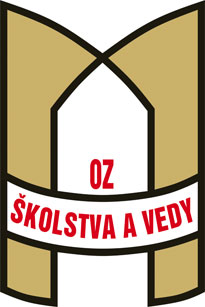Cyber-harassment project (2009-2010)
The safety and health of teachers is a priority of ETUCE. ETUCE believes a school should be a safe, healthy and propitious place for teaching and learning. Schools are the workplace of teachers, but first and foremost they are educational institutions for young students. Occupational health and safety problems can thus be harmful not only for the workforce (teachers and other staff in education), but can indirectly harm the pupils and put at risk the quality and efficiency of the education provided.

Related topics
Background
ETUCE's work on cyber harassment is based on a view that schools, which are the working environment for teachers and other school staff and the learning environment for young people, must be safe and secure to ensure the best possible situation for teaching and learning.
Cyber harassment can be understood as part of a broader problem of harassment and violence at the workplace. Statistics collected by the European Foundation for the Improvement of Living and Working Conditions (Eurofound) show that the levels of workplace violence in the education sector are above average. This is the case for both physical violence and psychological violence (bullying, harassment, mobbing etc.), and for violence from both colleagues and non-colleagues.
ETUCE's work on the issue aims to :
- raise awareness of the problems of violence and harassment experienced in schools
- promote exchange and dissemination of good practices on prevention of violence and harassment in schools
- improve expertise on violence and harassment in schools
- support Teacher Unions in the establishment of risk assessment systems in schools that include the issue of violence and harassment
- support the inclusion of risk management on violence and harassment in collective agreements
Description
The first project on violence in schools focused on raising awareness to all ETUCE member organisations regarding violence at school which not only endangers pupils but all those working in the education system. The project provided teacher unions with information on the European Social partners' Autonomous Framework Agreement on Harassment and Violence at work. It also provided training on the implementation of the agreement at national level in all EU/EFTA countries, analysing existing good practices on how to tackle violence at schools and how to transfer these practices to other countries. The project result is summarised in the ETUCE implementation guide for teacher trade unions and in the ETUCE Action Plan on Preventing and Tackling Violence in Schools, a guideline on the implementation of the Framework Agreement on European, national, local and school level.
Drawing on the experience from this first project it is clear that cyber-bullying /-harassment has developed into a highly discussed topic at schools because it affects teachers at their workplace and their working conditions in a most dangerous way.
Cyber harassment can be understood as the use of information and communication technologies such as email, chat room, discussion group, instant messaging, mobile phones or short message services for repeatedly deliberate and hostile behaviour by an individual or a group with the intention to harm others. It ranges from continuous e-mail-sending to someone who has said they do not want any further contact with the sender to threats, sexual remarks, pejorative labels, ganging up on victims by making them the subject of ridicule in forums, posting false statements, and passing on pictures or films via mobile phones. Cyber-harassment is also known as cyber-bullying or cyber-stalking. Typical tactics used by cyber-stalkers are e.g. vandalising a search engine or encyclopedia to threaten a victim's earnings, employment, reputation or safety and takes place in the workplace or on company/ school web sites, blogs or reviews. The motives range from emotional reasons to personal dislike and conflict of interests at work often due to direct economic motivation. Other motives can be prejudices on grounds of racial or ethnic origin, religion and belief, disability, age, sexual orientation and body image.
Cyber-harassment at schools has been identified by ETUCE as an issue that requires a new specific approach and the project presented here seeks to tackle this.
With this project ETUCE aims at further implementing the European Social Partners' Framework Agreement on Harassment and Violence at work through its member organisation and to support the further execution of the ETUCE Action Plan on preventing and tackling violence in schools, emphasising above all anti-cyber-harassment measures at schools.
Therefore this project has the overall objective to:
- support the implementation of the Framework Agreement on Harassment and Violence at work in the education sector among its member organisation
- to support the further implementation of the ETUCE Action Plan on preventing and tackling violence in schools, in particular cyber-harassment in schools
and the specific objectives to:
- raise awareness of cyber-harassment at schools and on how it affects the working conditions and health of teachers
- identify and exchange good practices of anti-cyber-harassment measures in schools
- identify and promote the involvement of trade unions in this issue.
To achieve the above mentioned objectives a steering group composed of union members from 5 different regions has given their national expertise in monitoring and guiding the project development.
Data was collected in form of two surveys as the basis for this project. The first survey helped to identify the actual status and measures taken on anti-cyber-bullying in the member countries, i.e. identify the actual situation and needs at national level. The second survey investigated trade union activities on anti-cyber harassment measures and areas of future challenges.
Advisory Group
- Jennifer Moses, NASUWT, United Kingdom
- Nina Lahtinen, OAJ, Finland
- Michal Mlcousek, OZPŠaV, Slovakia
- Marianne Demmer, GEW, Germany
- Patricio Perez, FECCOO, Spain




Funding

This project has been carried out with the financial support of the European Commission